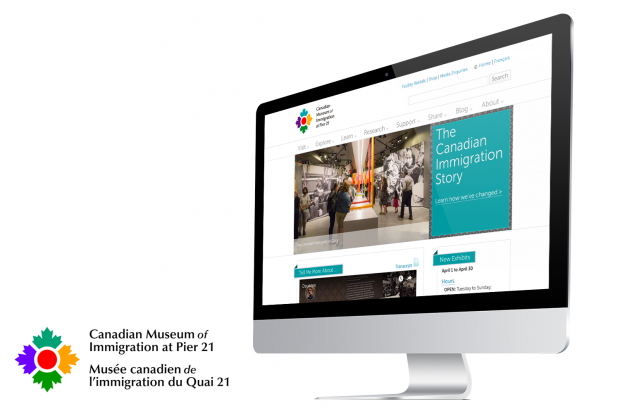 Support for Drupal 7 is ending on 5 January 2025—it’s time to migrate to Drupal 10! Learn about the many benefits of Drupal 10 and find migration tools in our resource center.
Support for Drupal 7 is ending on 5 January 2025—it’s time to migrate to Drupal 10! Learn about the many benefits of Drupal 10 and find migration tools in our resource center.The Canadian Museum of Immigration at Pier 21 (Pier 21) was built to “inspire and enable Canadians to explore their relationships” with immigration.
Located in Halifax, it is now a National Historic Site with a history of being the nautical entryway to Canada, overseeing one million immigrants entering the country from 1928 to 1971.
The museum had a Drupal website (pier21.ca) that provided general visitor information, donor support and ecommerce capabilities. In parallel, they were using open source software, CollectiveAccess, to enable and categorize their large collection of Canadian immigration stories. The problem was that Pier 21 needed the stories to be available to the public through the website. And the two versions of the platforms, Drupal and CollectiveAccess, were not compatible.
Pier 21 understood that specialized Drupal and programming skills were needed to solve their problem. They were looking for a Drupal partner with expert skills to turn their vision into a reality.

Objectives
Pier 21’s recently launched website had been built using Drupal 7. The new website was important to their branding initiatives and, in helping visitors plan their visits to the museum, book rooms for events, and shop online. The website, however, did not meet its basic business goal of helping to grow government funding by increasing user numbers and engagement, at the rate they needed.
The museum’s new website was experiencing a moderate uptick in numbers from providing a broader user experience. They wanted to see the increase continue by creating a deeper experience -- by allowing web visitors to explore their family immigration histories through the museum’s “Canadian Immigration Stories” collection.
The growing collection was built using CollectiveAccess, museum industry software used for creating catalogues. The issue was that open source developers had stopped working on cross-functionality between Drupal and CollectiveAccess and, they were no longer version compatible. The museum needed the platforms to work together and, as a result, give website visitors access to the museum’s developing collection.
The Pier21 team understood the effort required. They also recognized that the work was beyond the capabilities of their in-house staff and, that they needed to work with an agency able to solve their complex technical issue.
Goals
- Increase customer engagement and website traffic by creating a broader and deeper user experience
- Build a tool to provide new functionality and access to information for website visitors
- Allow records in the museum’s collections software, CollectiveAccess, to be imported into the Drupal 7 website for access by site visitors
- Build the tool to work with current and legacy versions of CollectiveAccess
- Train museum personnel to independently run the tool
- Ensure English / French language capabilities
Solution
To provide access from the museum’s website to its stories collection, the OPIN team created a multistep project plan. The work began with an analysis of the technical characteristics of the collections software to determine and create suitable files and file types for exporting.
Since the dates had been entered in a variety of formats, the data was massaged to adjust for the discrepancies in its entry. An importer was configured to bring the files from CollectiveAccess into the website. Those files were integrated into Drupal and a new content type for site visitors was created, allowing controlled access to the information and separate handling capabilities.
The new tool is not dependent on the version of CollectiveAccess. As new releases of both Drupal and CollectiveAccess are issued, the tool will continue to work without the compatibility problems that hindered the Pier 21 team in the past.
The project is currently in the testing phase. Following its completion and resolution, the museum staff will receive training so that they are able to work independently to add the collections data to the website.
Results
Although the technical team at OPIN had never used CollectiveAccess, they were able to work collaboratively with the client to learn, analyze and produce a solution. The resulting exportable CollectiveAccess .xml files can be imported into Drupal by museum staff and, the collection of immigration stories is now available to the public through the Pier 21 website.
Working with the museum to fully understand the needs, build a solution and manipulate the data to efficiently integrate the collection has created a leading edge solution to a complex problem. Although the project is currently undergoing user acceptance testing, the number of repeat website visitors is increasing and the solution is providing the first step in turning the client vision into a reality.
The relationship between OPIN and the museum continues as the team creates additional functionality and an improved user experience with projects ranging from providing website access to ships’ passenger lists to allowing more precise site search.
Technical specifications
-